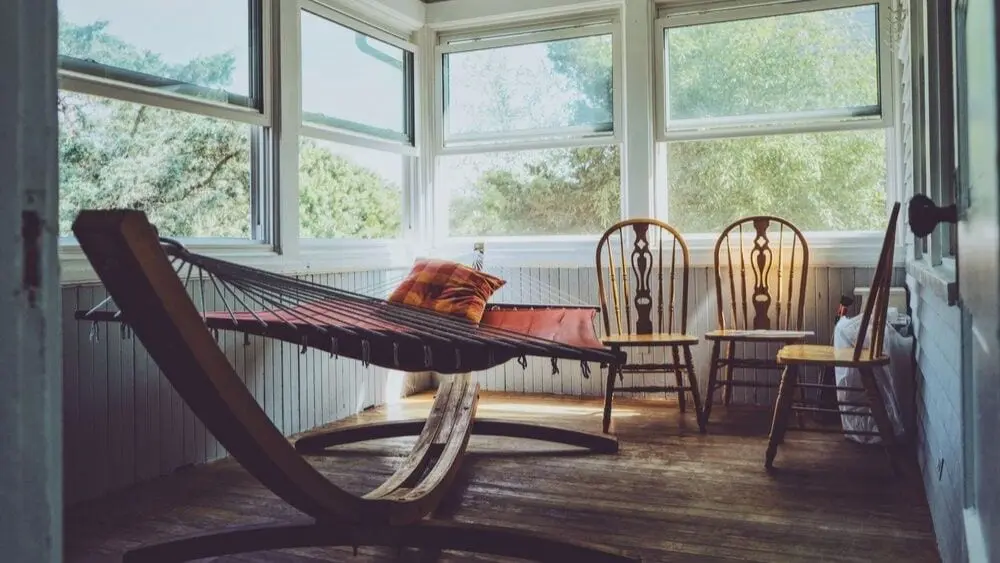
Sunroom,
lanai, enclosed porch, solarium, garden room … whatever you call it, these
beautiful glass rooms on the back of a home let you enjoy the great outdoors –
without actually being outside! If you’re house-hunting and know you want a
sunroom in your new home, you must decide between a three-season and four-season
room.
As
Alure Home Improvement puts it, “One of the best aspects of a [sunroom] is
that it’s an incredibly versatile space. It doesn’t have to serve the purposes
that other spaces, such as a dining room or bedroom, do.” You can use
these rooms for entertaining, dining, or simply lounging. You can turn it into
a kids’ playroom, an office, or an indoor garden.
As
the name sunroom implies, most of these rooms have wall-to-wall or
floor-to-ceiling windows or screens to let in plenty of natural light. When the
weather is nice, you can slide the windows or doors open to let in fresh air,
too. But the biggest advantage? Enjoying the fresh air and sunshine without bugs. Sunrooms are even a
beautiful place to sit and watch the rain, if that’s your jam!
You
can do all of this in both three-season and four-season rooms. The difference
is how much of the year you can comfortably use the room.
3-Season Rooms
A three-season
room generally is used in spring, summer, and fall in most areas of the
country. They can be as basic as a screen-enclosed porch, or as elaborate as an
all-glass solarium.
However,
a three-season room is not well-insulated (if it’s insulated at all), and it’s
not connected to your home’s HVAC system, which is why it can’t be used in the
winter. A three-season room also has a separate door to keep it closed off from
the rest of your house since it’s not temperature-regulated.
On
average, it costs around $15,000-$30,000 to add a three-season room, and
homeowners can expect to see about a 50 percent return on investment
Pros:
- Can be used most of the year
- Keeps out bugs and weather
- More affordable than a four-season room
- Quick construction if adding onto existing home
Cons:
- Unusable in extreme winter and summer temperatures
- Adds less value to a home than a four-season room
4-Season Rooms
A four-season
room is just that: it can be used year-round and is a true extension of your
home.
It
must be integrated into your home’s construction, using the same framing,
insulation, roofline, and HVAC system. This, of course, makes the room much
more comfortable in extreme temperatures. It also is open to the rest of your
home, rather than being separated by a door. Plus, the integrated roofline
makes it look like a part of your home, instead of an addition.
On
average, it costs around $30,000-$60,000 (or more on a high-end addition!) to add
a four-season room, and homeowners can expect to see about a 50 percent return
on investment
Pros:
- Can be comfortably used all year long
- Adds extra living space that can be used in many ways
- Adds more value to a home than a three-season room
Cons:
- More expensive than a three-season room
- Longer, more in-depth construction process
Which Sunroom Is Right For You?
While
budget is an obvious consideration, your lifestyle will also largely dictate
whether a three-season or four-season room is right for you.
Do
you tend to get the winter blues when the sun is shining but freezing cold?
Eric Pickell, sales and marketing manager for Orren Pickell Building Group near
Chicago, reminds homeowners that when
considering a sunroom addition, “The value in the warmer months is clear, but a
glass-enclosed space can also help combat cabin fever in the winter.”
Likewise, if your goal is to add true, usable living space, a four-season room
creates an extension of your home that can be used for many purposes as your family
grows and changes.
On
the other hand, if you live in a mild southern state, a simple three-season
room with screens and single-pane glass will allow you to maximize time outside
without being bothered by bugs or weather. If your goal is to grow plants or
vegetables year round, or you just want an outdoor place to sit only when the
weather is just right, then a three-season
room will meet your needs just fine.

Liyya Hassanali is a Project Manager and Content Strategist for Kinship Design Marketing, a boutique agency that provides marketing strategies and content for architects, interior designers, and landscape designers. She is a 15+ year veteran of the marketing and advertising industry, working closely with her clients to provide written content that meets their marketing goals and gets results.
Liyya is passionate about home design and décor and is a confessed HGTV and Pinterest addict. When not providing content writing services for her clients, she can be found browsing home décor sites or spending time with her family.
 Reasons for Buying a House in the USA for Non-Residents
Reasons for Buying a House in the USA for Non-Residents